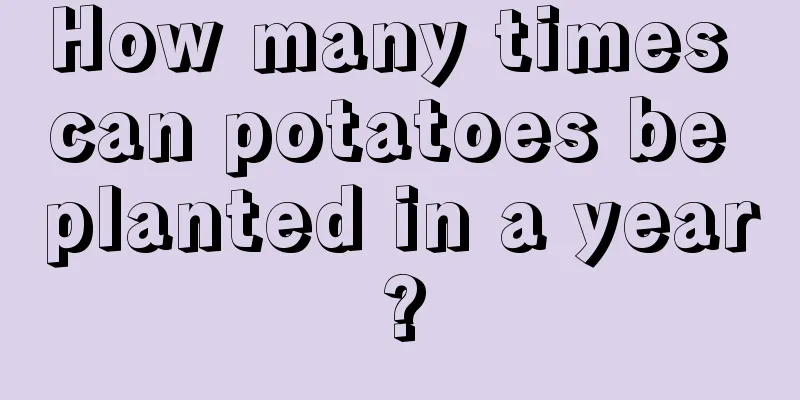When is the best time to plant winter vegetables?

|
There is a kind of vegetable that is particularly delicious when cooked into soup. In the southern regions, fermented black beans are usually added for seasoning. This dish is called winter amaranth , also known as winter amaranth. However, it is different from ordinary amaranth. This vegetable prefers a cool climate. Let’s learn together when is the best time to plant winter vegetables? When is the best time to plant winter vegetables? Winter vegetables are best planted in spring and autumn, specifically from February to March in spring and from September to November in autumn. The climate during these two time periods is cool and the temperature is suitable, generally around 15℃ to 20℃, which is the most suitable temperature for the growth of winter vegetables. In temperate regions, the specific time for autumn planting can be a little later, around early to mid-October to late November. Such climatic conditions are conducive to the germination of winter vegetable seeds and the growth of plants, and also help to improve the survival rate and yield. Winter vegetable planting method 1. Land preparation Choose a plot with flat terrain, loose soil, rich in nutrients and good drainage. Avoid planting near trees, buildings and other obstructions to prevent affecting the growth of winter vegetables. 2. Fertilization Before planting, apply well-rotted organic fertilizer to increase soil fertility. During the planting process, it is also necessary to add an appropriate amount of compound fertilizer on time to ensure that the winter vegetables have a long growing season and sufficient nutrient supply. 3. Planting seeds It can be planted directly or by transplanting seedlings. When sowing in holes, keep the spacing between rows and plants at about 25 cm, sow 4-5 seeds in each hole, cover with a thin layer of soil after sowing, and keep the soil moist. 4. Field management After the transplants are successful, we must pay attention to tillage and weeding, and apply fertilizer in time after harvesting during the peak growing season. Spray pesticides in advance to prevent and control diseases and pests. 5. Watering In the early stages of growth, water 2-3 times a day to keep the soil moist. After maturity, reduce watering frequency appropriately to 1-2 times a week. 6. Pest and disease control Winter vegetables are susceptible to pests and diseases such as aphids, gray mold, and black ring spot of cabbage. Timely prevention and control measures should be taken, such as spraying pesticides and disinfecting the soil. The above is an introduction to the planting time and key points of winter vegetables. Winter vegetables are generally planted in spring and autumn. Of course, local conditions must also be suitable for growing winter vegetables.
|
<<: Why do camellia buds fall off?
>>: How to grow Margarite flowers
Recommend
How to protect outdoor flowers from cold
Protecting ground flowers from the cold: Covering...
How to grow nasturtium in autumn
1. Sufficient water Nasturtium likes moisture, an...
How to prune azalea bonsai, illustrated instructions for pruning azalea bonsai
1. Seedling pruning It is suitable when the azale...
The most popular flowers in 2019 are very fashionable to put at home, why don’t you grow one?
Top 1——Fairy Tale Tree The fairy tale tree that w...
Cultivation methods and techniques of Kalanchoe
Kalanchoe is a plant with great ornamental value....
What to do if the golden bell flower does not bloom
1. Flowering period of golden bell flower The flo...
Cultivation methods and precautions of sausage tree
Cultivation methods and precautions of sausage tr...
What is the best fertilizer for apple trees?
When to fertilize apple trees Generally speaking,...
Endless Summer potting method and steps
Endless Summer Potting Time Endless Summer is usu...
Is it better to plant Photinia in winter or spring?
1. Is it better to plant in winter or spring? Of ...
How to prune Impatiens
When to prune The branches of Impatiens are less ...
The difference between Acorus calamus and Acorus calamus
1. Difference between rhizomes The rhizome of Aco...
Growth environment conditions and characteristics of the Welcoming Pine
The growth environment conditions and requirement...
How to Propagate Grape Hyacinth
Seed propagation The most common method of propag...
What to do if the leaves of Cymbidium orchid turn yellow
1. Increase lighting Reason: If the Cymbidium is ...









